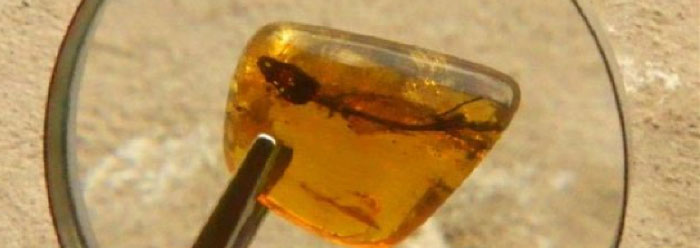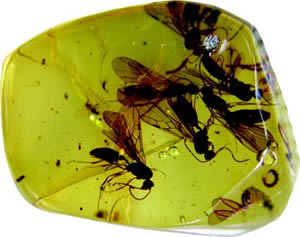Now a new study in fossil moths continues to undermine any sort of fossil evidence for evolution.1 A group of scientists used optical microscopy, scanning electron microscopy, confocal laser scanning microscopy, and transmission electron microscopy to reveal the detailed structure of wing scales in ancient moth fossils found in both amber and rocks. The Cretaceous amber fossils were alleged to be about 99 million years old and the oldest Jurassic-rock fossils were dated at about 200 million years old.1
Both moths and butterflies are members of the insect order Lepidoptera whose wing colors and patterns are created by optical effects (interference, diffraction, or refraction) rather than by pigments as found in most other animals. The diverse and often startling metallic-like colors arise from the specified arrangements of wing micro-structures that interact with light. And like moths, butterfly fossils also confound evolution—the diversity of fossil butterflies are roughly equal to those alive today. In a research paper on Lepidopteran evolution, the authors state, “Remarkably, the proportion of butterflies among the fossils in number of specimens (some 80 specimens known) is close to the proportions among extant Lepidoptera in species.”2 Very little insect evolution is evident at all in the fossil record, as noted in a recent paper, whose authors state, “species-richness data also tentatively suggest little or no net increase in richness over the past 125 Myr.”3 The major types of insects appear suddenly in a rich explosion of diversity and then stay the same from then on. While these discoveries fit perfectly with the Bible, they utterly defy evolutionary expectations.
- Zhang, Q. et al. 2018. Fossil scales illuminate the early evolution of lepidopterans and structural colors. Science Advances. 4 (4): e1700988.
- De Jong, R. 2007. Estimating time and space in the evolution of the Lepidoptera. Tijdschrift voor Entomologie. 150: 319–346.
- Clapham, M. E. et al. 2016. Ancient origin of high taxonomic richness among insects. Proceedings Royal Society B. 283 (1824): DOI: 10.1098/rspb.2015.2476.
Stage Image Credits: Copyright © L. Clark. 2017. Used in accordance with federal copyright (fair use doctrine) law. Usage by ICR does not imply endorsement of copyright holder.
*Dr. Jeffrey Tomkins is Director of Life Sciences at the Institute for Creation Research and earned his Ph.D. in genetics from Clemson University.


 Beautiful, golden fossilized amber begins as resin. Exuded as a sticky liquid from bark or wood, it polymerizes into solid amber. It slowly degrades when left in the open and therefore must be rather quickly buried in dense sediments. There are about twenty amber deposits, the most prominent locations are in the Baltic and Dominican Republic.
Beautiful, golden fossilized amber begins as resin. Exuded as a sticky liquid from bark or wood, it polymerizes into solid amber. It slowly degrades when left in the open and therefore must be rather quickly buried in dense sediments. There are about twenty amber deposits, the most prominent locations are in the Baltic and Dominican Republic.